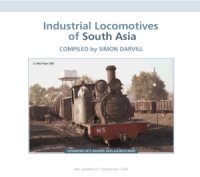A book to be published in September 2011 looks potentially very interesting: Financing India’s Imperial Railways, 1875–1914, by Stuart Sweeney.
The Indian railway network began as a liberal experiment to promote trade and commerce, the distribution of food and military mobility. Sweeney’s study focuses on Britain’s largest overseas investment project during the nineteenth century, offering a new perspective on the Anglo-Indian experience.
Chapter 3 is entitled “Military Railways in India, 1875–1914: Russophobia, Technology and the Indian Taxpayer”. The book’s index is available at publisher Pickering & Chatto’s website, and there are a number of mentions of Afghanistan, the Kandahar Railway and related matters.
By the looks of it, this will be a serious academic study. Unfortunately, and probably not unrelated to this, it will also be sixty quid…
(other forthcoming books from the publisher include “The Unpublished Letters of Henry St John, 1st Viscount Bolingbroke”. Will the very existence of such a book trigger some kind of publishing grandfather paradox?)

